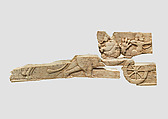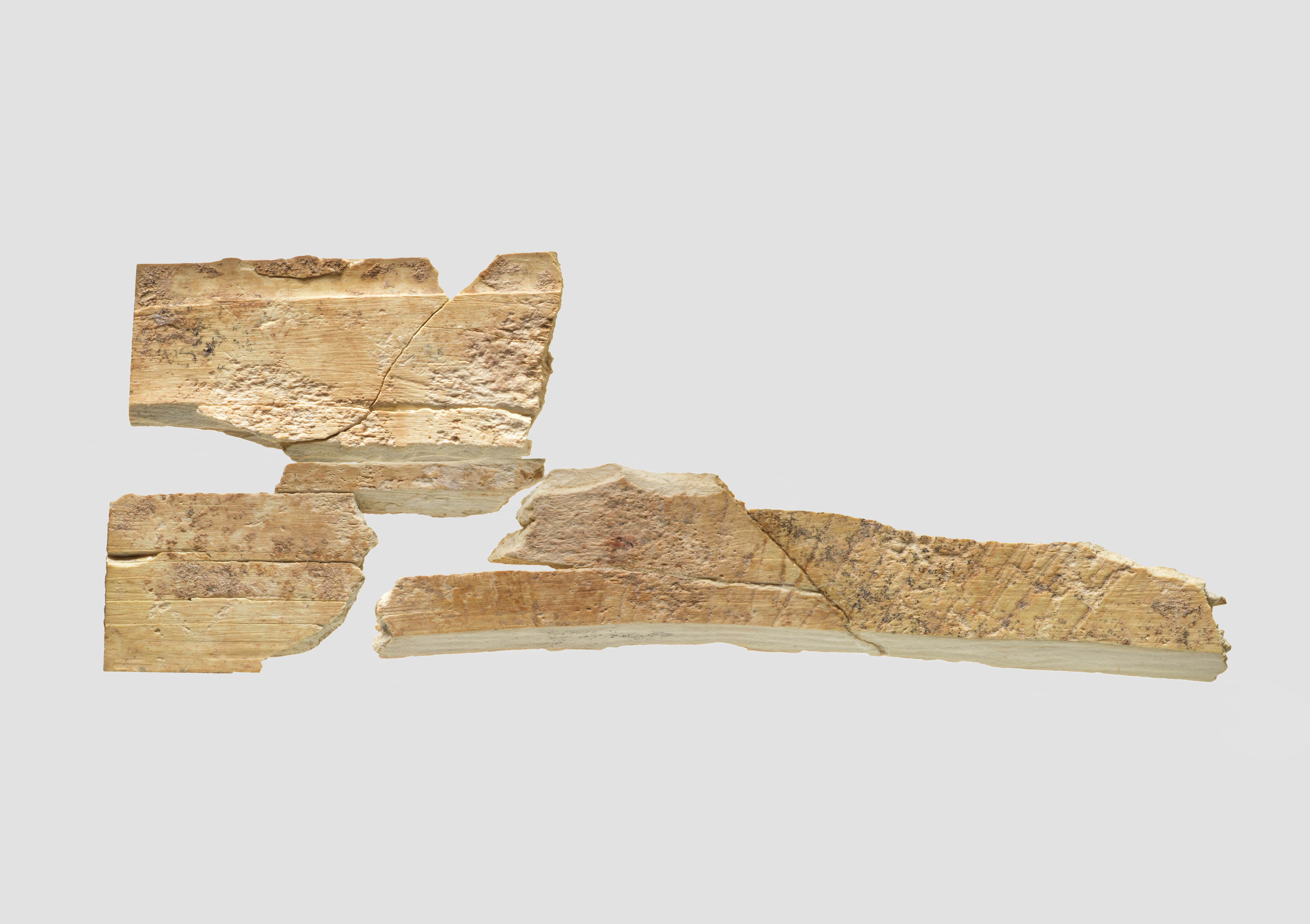Panel fragment
Not on view
This object is one of three related fragments in the collection of the Metropolitan Museum, said to be from Ziwiye, which depict hunting and battle scenes (51.131.9; 51.131.11; 51.131.12). Stylistic differences suggest they were carved by different artisans, but all three show a familiarity with the scenes depicted in the stone reliefs that decorated Assyrian palaces. Because of their similarity to the Assyrian reliefs, they have been classified as Assyrian style ivories. They were likely used as furniture decoration. On this piece, a roaring lion attacks a chariot, in which an archer rides, drawing his bow. At left, the rear hooves and tail of a horse can be seen; as the front hooves do not appear on the plaque, the horse may be rearing over the attacking lion. The dynamics of the conflict between the lion and archer are difficult to understand, since the lion turns his head away from the chariot while the archer aims his bow in the opposite direction. The oversized head and raised paw of the lion are much larger than the tiny figure of the archer. Details such as the lion’s mane and the tail of the horse are incised.
In 1946 a treasure was reportedly found at a mound near the village of Ziwiye in northwestern Iran. Objects attributed to Ziwiye are stylistically similar to Assyrian art of the eighth and seventh centuries B.C. as well as to the art of contemporary Syria, Urartu, and Scythia. Many objects of gold, silver, bronze, ivory, and ceramic have since appeared on the antiquities market with the provenance of Ziwiye, although there is no way to verify this identification.
This image cannot be enlarged, viewed at full screen, or downloaded.
This artwork is meant to be viewed from right to left. Scroll left to view more.



